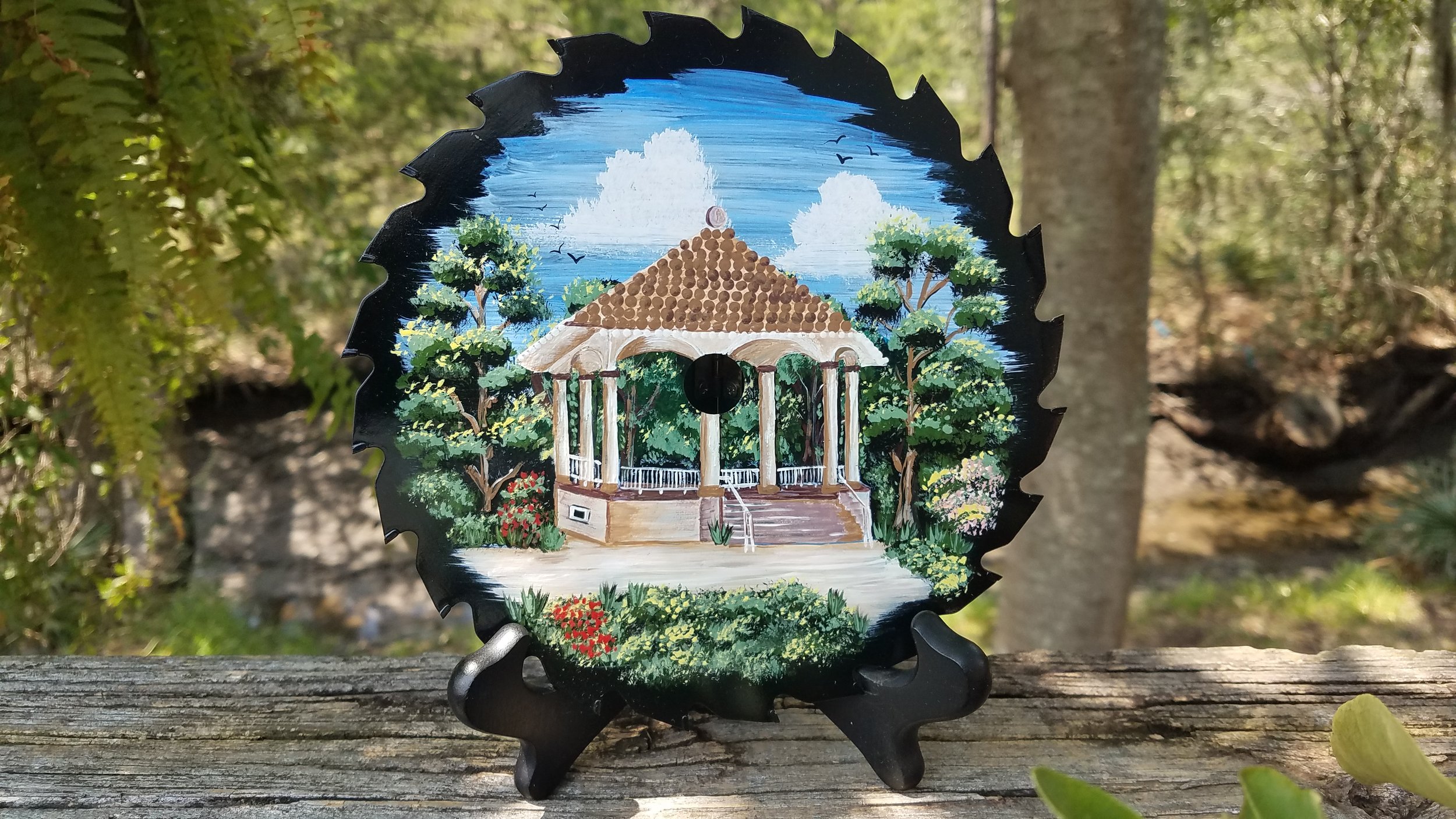
Shop & Such
Aenean lacinia bibendum nulla sed consectetur. Donec ullamcorper nulla non metus auctor fringilla. Duis mollis, est non commodo luctus, nisi erat porttitor ligula, eget lacinia odio sem nec elit. Donec id elit non mi porta gravida at eget metus. Cum sociis natoque penatibus et magnis dis parturient montes, nascetur ridiculus mus.
White Point Garden Bandstand Saw Blade
White Point Garden Bandstand Saw Blade
- Hand-painted Saw Blade
- Play that funky music, White Point!
-Each piece is one of a kind created with acrylic paint
- Measures 7.25" x 0.2"
- STAND NOT INCLUDED
A Brief History of White Point Garden
Living in a city like Charleston you develop a very strong appreciation for history, particularly local history. Everywhere you go there are reminders to tell you who did what, when, where, and why -- and sometimes how.
Let's start at the most obvious point on the city’s map—White Point Garden. When you climb the Battery wall (promenade) and look toward the ocean, you will see a number of known historic sites. Fort Sumter, Fort Moultrie, Castle Pinckney, Sullivan's Island, and the USS Yorktown are the most notable visible sites to see.
Oyster Point (now White Point) is the first place seen by the original settlers and those who brought them. Because of the bleached white oyster shells dumped at this point, both names have been used for the entirety of the park behind the Point. As early as the 1720s, Charles Towne officials and maritime defenders had captured and hung many of the pirates and their crews that populate the Romantic history of that day (as can be read about in our blog-- Fully Charged: A Brief History of the Battery).
The great hurricanes of 1724 and 1752 left the White Point area desolate, destroying both landscape and housing. It was during this period that the Point began to develop with the addition of a “log “seawall to protect the new elegant homes. Charleston’s well-to-do decided to build upon the newly filled low spots along the point. The hurricane of 1804 took out the seawall of log which was replaced with a wall of ballast stone. This new wall allowed the park to develop over the next Century of public space used for all sorts of events that endured the “park” (White Point Park) to Charleston.
Over the three centuries of White Point Garden’s existence, numerous pieces were added. During the Revolutionary War as fortifications were built, various “cannons” were placed to aid in that effort. The same was true during the Civil War as the Confederate troops attempted to hold Charleston as Union troops persisted in their effort to lay siege. Other cannon and mortars were put in place and remain there to this day.
The Monuments that dot the greenspace vary in time from that which recognized the contribution of Major General William Moultrie from the Revolutionary War, to the Confederate Memorial for those who defended Charleston, to the memorial of those who died aboard the USS Amberjack, SS219 on March 22nd, 1943—73 crewmen were aboard when the submarine was sunk by Japanese gunboats.
The most obvious structure by size in the area is the White Point Garden Bandstand which was donated to the city in 1907 by Mrs. Martha Covington as a memorial to her parents, Mr. and Mrs. George Wilson Williams. The Williams family were the original owners of the well-known Calhoun mansion on Meeting Street just four blocks from White Point Garden. Mrs. Carrington and family-owned and resided at number two Meeting Street—now the famous to Meeting Street Inn. These homes are just two of the significant (structurally and historically) homes that line the battery and adjoin White Point.
White Point Garden was yesterday and is today Charleston's Premier outdoor area to take in Charleston's beauty and history. Our hope is that nothing will change that gracious, welcoming image to our charming city for many years to come.
~ David Joyner











